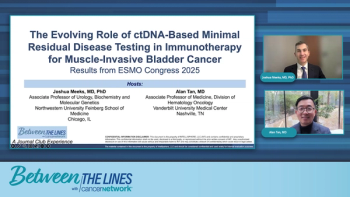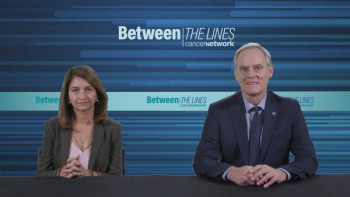
Measuring Impact: Observed Differences in Dermatologic AEs Between COCOON Protocol and Standard Approaches
Panelists discuss how regular monitoring, patient education about reporting symptoms promptly, and visual assessment during biweekly visits are essential for effectively managing dermatologic adverse events.
Episodes in this series

Video content above is prompted by the following:
Dermatologic Adverse Event Management for Amivantamab Patients
Current Monitoring Practices
The panelists have established a proactive approach to monitoring dermatologic adverse events in patients receiving amivantamab:
- Visual assessment of patients during regular biweekly treatment visits
- Direct patient education about potential dermatologic toxicities including:
Rashes
- Nail changes
- Scalp lesions/scabs
Patient Communication Strategy
- Up-front education: Patients are explicitly informed at the beginning of treatment about potential dermatologic adverse effects.
- Self-monitoring instructions: Patients are advised to:
- Check their scalp multiple times weekly
- Be attentive to bodily changes
- Report any dermatologic issues immediately
- Digital communication methods: Although formal digital tools are limited, clinicians encourage:
- Email or text message communication
- Sending photos of concerning areas
Clinical Rationale
This monitoring approach is implemented for several important reasons:
- Quality of life preservation: Dermatologic adverse effects can significantly impact patient well-being
- Treatment adherence: Better adverse effect management leads to improved protocol adherence
- Avoiding treatment interruptions: Early intervention may prevent the need for:
- Treatment holds
- Dose reductions
Challenges Noted
A common issue is delayed reporting by patients, with examples of:
- Patients enduring symptoms for extended periods (up to 6 months) before reporting
- Waiting until symptoms become severe before seeking intervention
Intervention Philosophy
The clinicians emphasize that earlier intervention is preferable to delayed management, with the hope that prophylactic approaches will reduce overall toxicity burden.
Newsletter
Stay up to date on recent advances in the multidisciplinary approach to cancer.

















































































